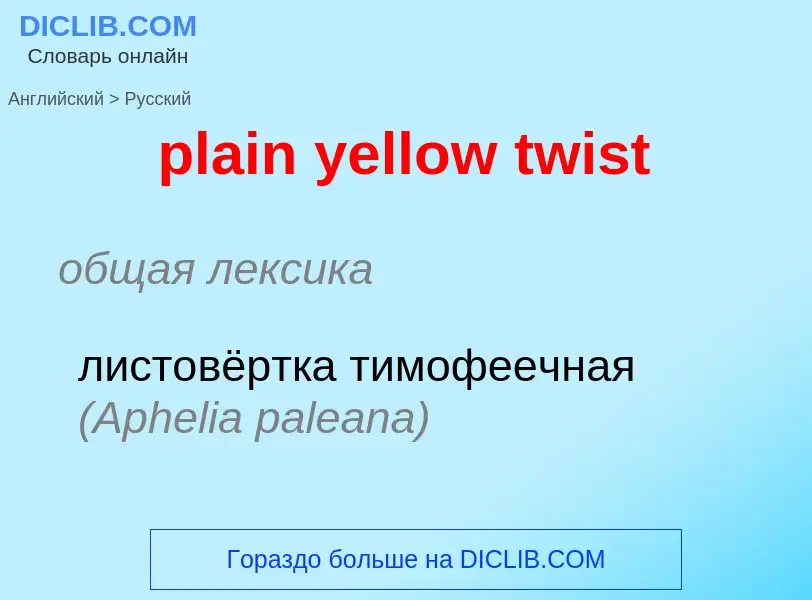Translation and analysis of words by ChatGPT artificial intelligence
On this page you can get a detailed analysis of a word or phrase, produced by the best artificial intelligence technology to date:
- how the word is used
- frequency of use
- it is used more often in oral or written speech
- word translation options
- usage examples (several phrases with translation)
- etymology
plain yellow twist - translation to russian
общая лексика
листовёртка тимофеечная (Aphelia paleana)
[plein'di:lə]
существительное
редкое выражение
прямой
откровенный человек
Wikipedia
The Plain Yellow Banner (Chinese: 正黃旗; pinyin: Zhèng Huáng Qí) was one of the Eight Banners of Manchu military and society during the Later Jin and Qing dynasty of China. The Plain Yellow Banner was one of three "upper" banner armies under the direct command of the emperor himself, and one of the four "right wing" banners. The Plain Yellow Banner was the original banner commanded personally by Nurhaci. The Plain Yellow Banner and the Bordered Yellow Banner were split from each other in 1615, when the troops of the original four banner armies (Yellow, Blue, Red, and White) were divided into eight by adding a bordered variant to each banner's design. After Nurhaci's death, his son Hong Taiji became khan, and took control of both yellow banners. Later, the Shunzhi Emperor took over the Plain White Banner after the death of his regent, Dorgon, to whom it previously belonged. From that point forward, the emperor directly controlled three "upper" banners (Plain Yellow, Bordered Yellow, and Plain White), as opposed to the other five "lower" banners.
The flag of the Plain Yellow Banner eventually became the basis of the Flag of the Qing dynasty.


![''Aftermath'', the 1953 Pulitzer Prize–winning editorial cartoon by [[Edward D. Kuekes]] ''Aftermath'', the 1953 Pulitzer Prize–winning editorial cartoon by [[Edward D. Kuekes]]](https://commons.wikimedia.org/wiki/Special:FilePath/Aftermath by Edward Kuekes.jpg?width=200)
![Front page of the ''Cleveland Plain Dealer'' dated August 7, 1945 featuring the [[atomic bombing of Hiroshima]], [[Japan]] Front page of the ''Cleveland Plain Dealer'' dated August 7, 1945 featuring the [[atomic bombing of Hiroshima]], [[Japan]]](https://commons.wikimedia.org/wiki/Special:FilePath/Cleveland Plain Dealer 8-07-1945.jpg?width=200)
